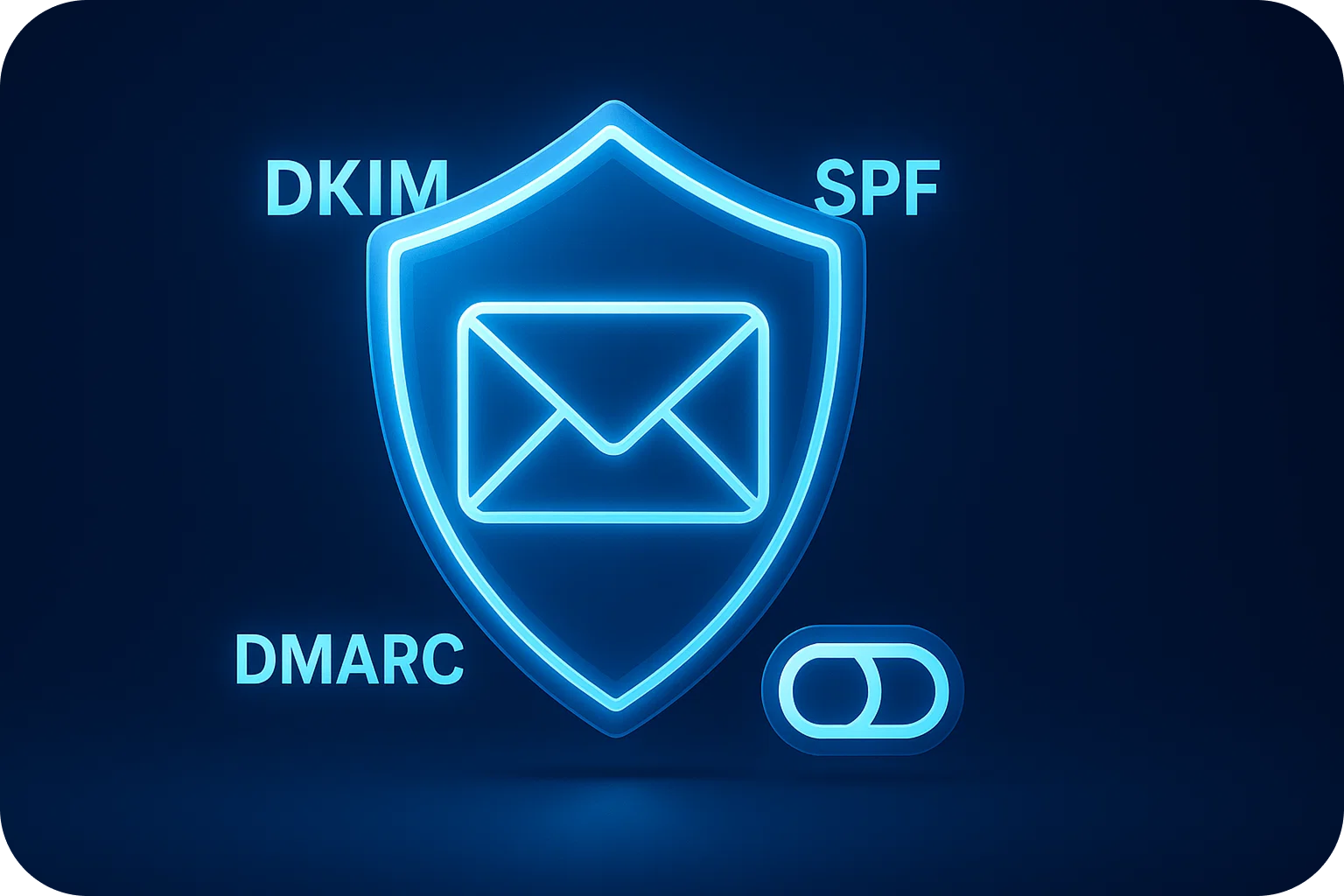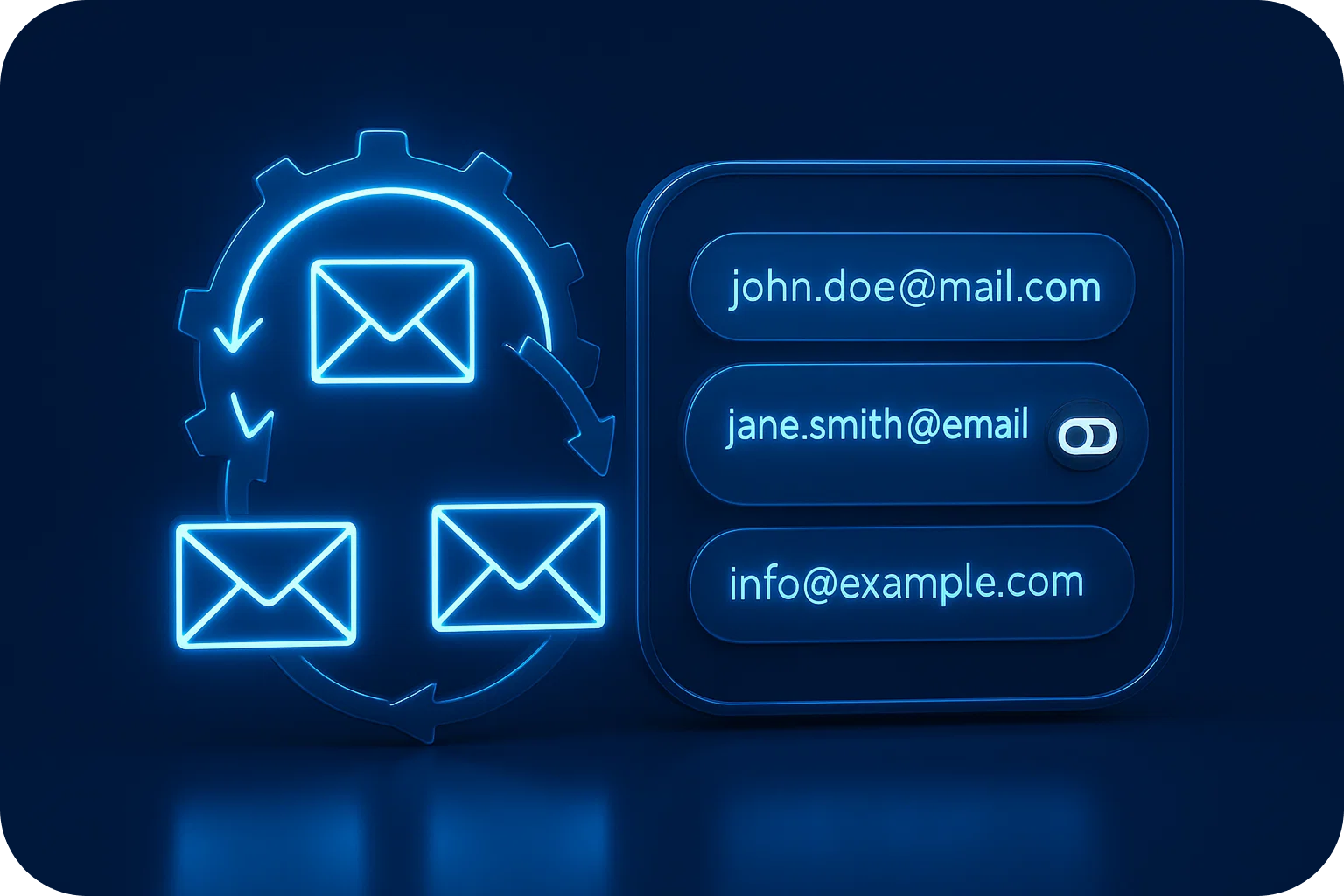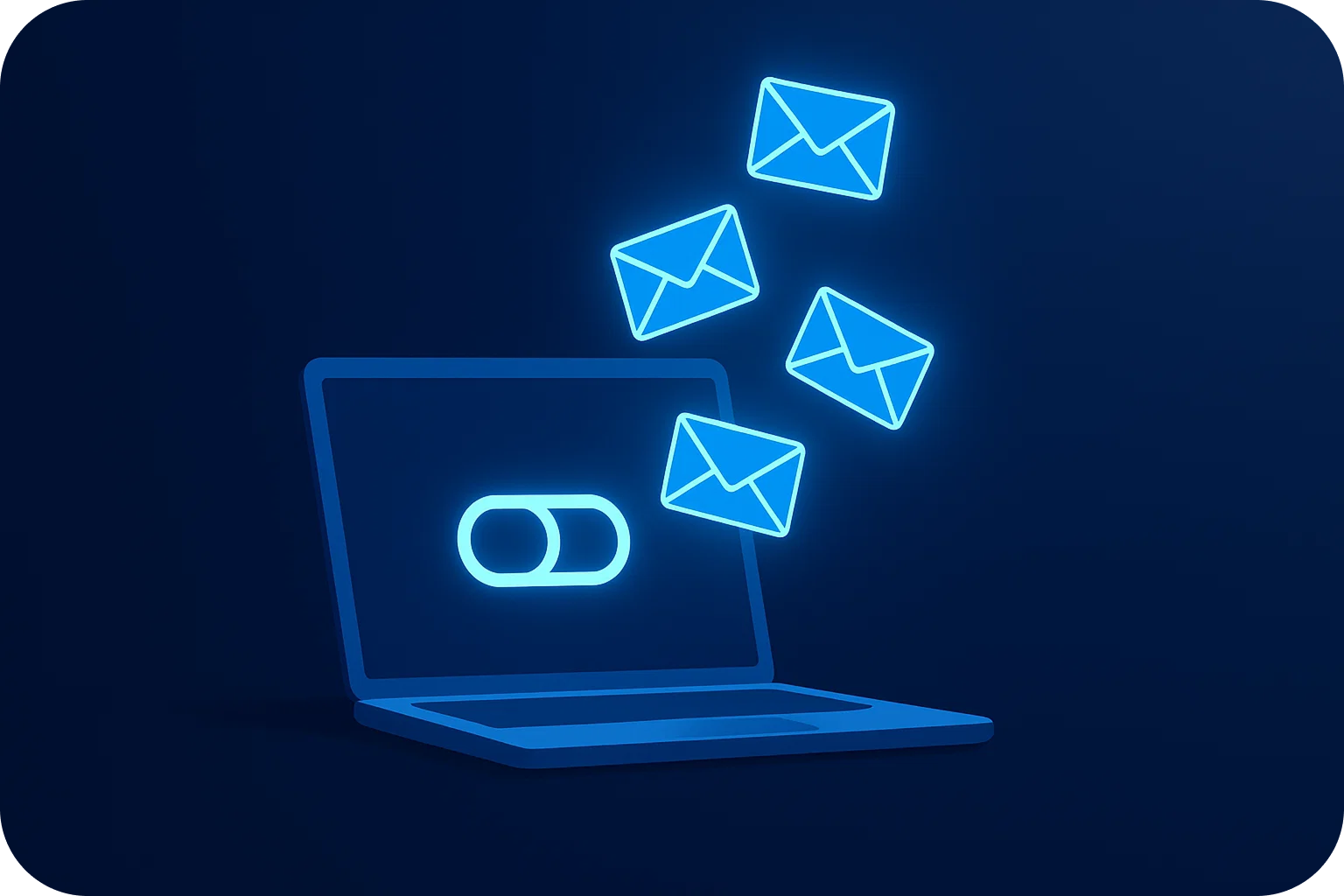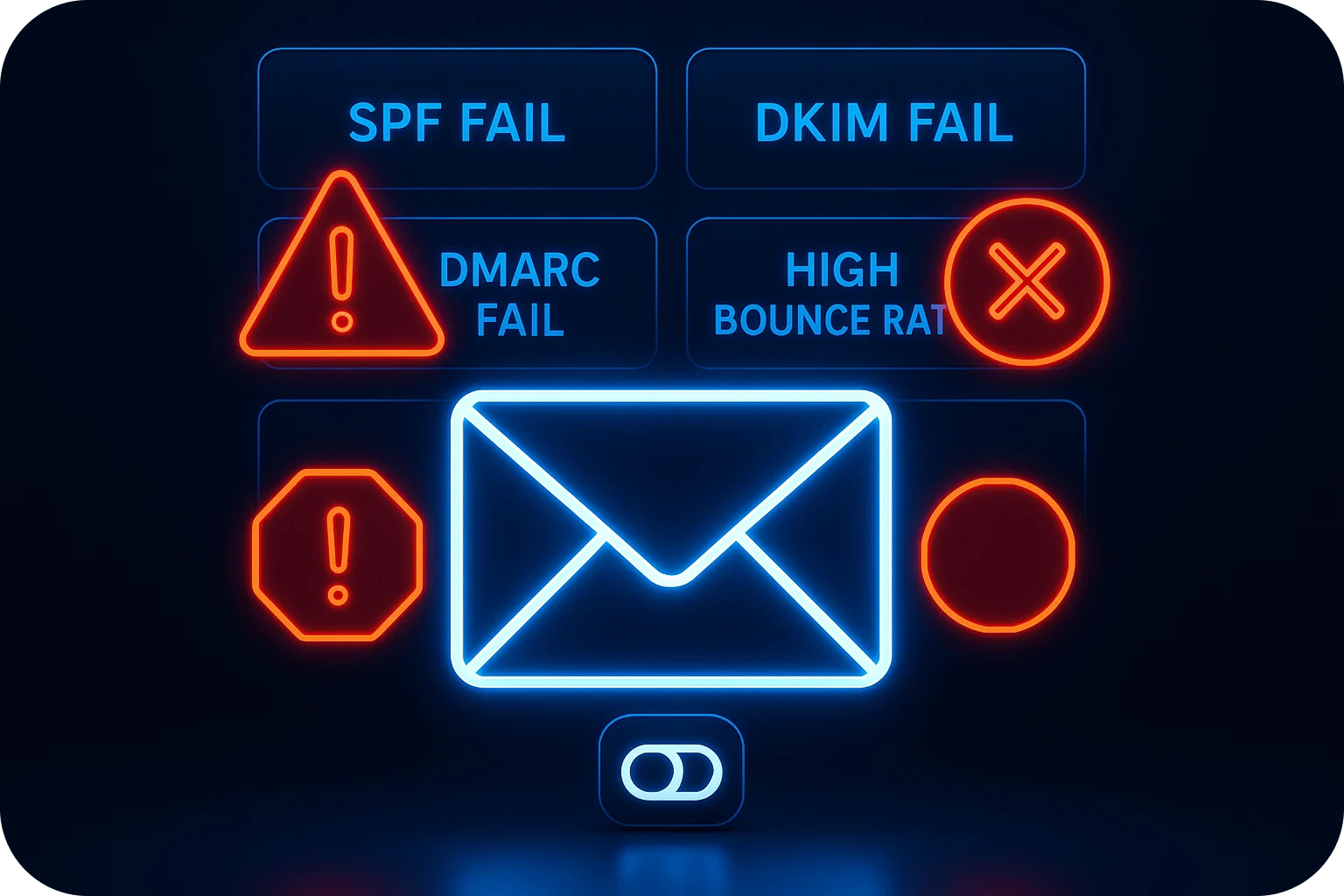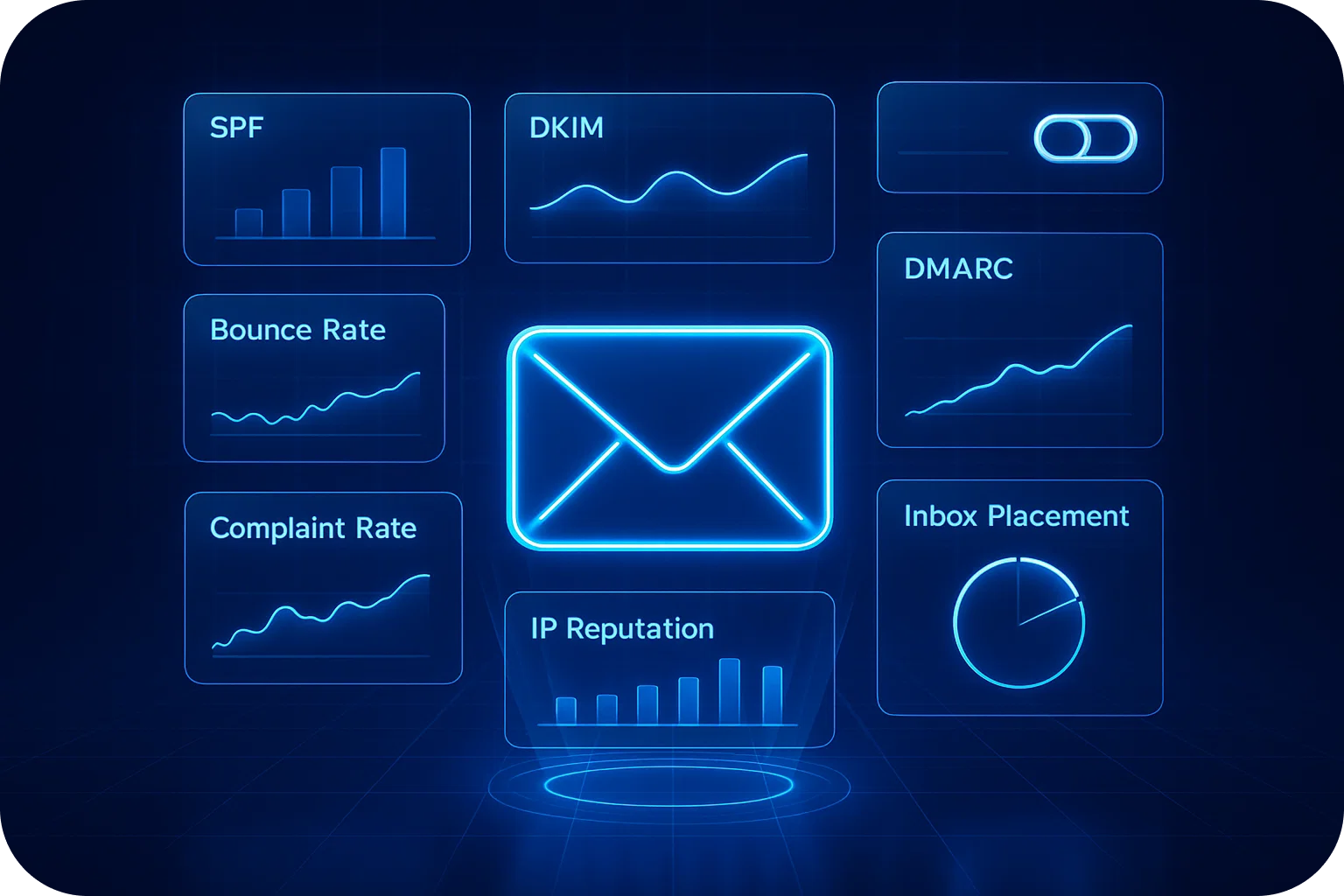The Hidden Cost of Email Blacklists: Prevention and Recovery Strategies

When your carefully crafted cold email campaign suddenly stops generating responses, the culprit might not be your messaging; it could be an email blacklist. For startups and sales teams relying on outbound email to drive growth, landing on a blacklist can silently devastate your pipeline, damage your sender reputation, and cost you thousands in lost opportunities.
Understanding email blacklists and implementing prevention strategies isn't just about maintaining deliverability, it's about protecting your most valuable sales channel.
What Is an Email Blacklist?
An email blacklist is a real-time database that identifies IP addresses and domains suspected of sending spam or malicious content. Email service providers like Gmail and Outlook use these blacklists to filter incoming messages and protect their users from unwanted email.
When your domain or IP address appears on a blacklist, email providers may automatically route your messages to spam folders or reject them entirely, often without notifying either you or your recipients.
Types of Email Blacklists
Not all blacklists carry the same weight. Understanding the different types helps you prioritize your monitoring efforts:
- Public Blacklists: Maintained by third-party organizations like Spamhaus, Barracuda, and SpamCop, these are widely used by email providers worldwide
- Private Blacklists: Created and maintained internally by individual email service providers based on their own criteria
- IP-Based Blacklists: Target specific IP addresses associated with spam activity
- Domain-Based Blacklists: Focus on sender domains rather than IP addresses
The True Cost of Being Blacklisted
The impact of an email blacklist extends far beyond a temporary dip in open rates. For sales teams, the consequences compound quickly:
Immediate Revenue Impact
When your emails stop reaching prospects, your pipeline dries up. If your sales team sends 1,000 emails per day with a 2% conversion rate, a blacklist that blocks 50% of your messages could cost you 10 qualified leads daily. Over a month, that's 300 lost opportunities.
Damaged Sender Reputation
Your sender reputation is like a credit score for email deliverability. Once damaged, it takes weeks or months to rebuild, even after you've been removed from a blacklist. During this recovery period, your email deliverability remains compromised across all campaigns.
Wasted Marketing Investment
Every email that lands in spam represents wasted resources: copywriting time, list-building efforts, software costs, and sales team bandwidth. For startups operating on tight budgets, these inefficiencies can significantly impact your customer acquisition cost.
Team Productivity Loss
Sales teams lose confidence in email as a channel when deliverability issues persist. They may abandon proven outreach strategies or waste time troubleshooting technical issues instead of closing deals.
How Domains and IPs Get Blacklisted
Understanding the root causes of blacklisting helps you avoid these pitfalls:
High Complaint Rates
When recipients mark your emails as spam, email providers take notice. A complaint rate above 0.1% can trigger blacklist inclusion. This often happens when sales teams purchase contact lists, email irrelevant prospects, or fail to honor unsubscribe requests.
Spam Trap Hits
Spam traps are email addresses specifically created to catch spammers. They're never used by real people and don't opt into mailing lists. Hitting a spam trap signals that you're using purchased lists, scraping websites, or not maintaining proper list hygiene.
Poor Email Authentication
Missing or misconfigured SPF, DKIM, and DMARC records make it easy for spammers to impersonate your domain. Email providers may blacklist domains with weak authentication to protect their users from phishing attacks.
Sudden Volume Spikes
Sending 10,000 emails from a new domain that previously sent 100 per day raises red flags. Email providers interpret sudden volume increases as potential spam activity, especially from domains without an established sending history.
Low Engagement Rates
If recipients consistently ignore or delete your emails without opening them, email providers conclude that your content isn't wanted. Persistent low engagement can lead to blacklisting, particularly on private provider blacklists.
Prevention Strategies: Staying Off Blacklists
The best blacklist recovery strategy is never getting listed in the first place. Implement these prevention tactics to protect your sender reputation:
1. Implement Proper Email Authentication
Configure SPF, DKIM, and DMARC records for every sending domain. These authentication protocols verify that emails actually come from your domain and haven't been tampered with in transit. Proper authentication is non-negotiable for maintaining email deliverability.
2. Warm Up New Domains and IP Addresses
Never launch a cold email campaign from a brand-new domain. Start with low daily volumes (20-30 emails per day) and gradually increase over 3-4 weeks. This warming period establishes your sending reputation and demonstrates to email providers that you're a legitimate sender.
3. Maintain Strict List Hygiene
Regularly clean your email lists by removing:
- Hard bounces immediately
- Soft bounces after three consecutive failures
- Unengaged contacts who haven't opened emails in 90+ days
- Spam trap indicators (typo domains, role-based addresses from unknown companies)
4. Monitor Your Sender Reputation
Use tools like Google Postmaster Tools, Microsoft SNDS, and third-party reputation monitoring services to track your sender score. Set up alerts for reputation drops so you can address issues before they escalate to blacklisting.
5. Respect Engagement Signals
Pay attention to how recipients interact with your emails. If someone consistently deletes your messages without opening them, remove them from your list. Forcing emails on uninterested recipients damages your reputation and increases blacklist risk.
6. Use Dedicated IP Addresses for High Volume
If you're sending more than 500,000 emails monthly, consider dedicated IP addresses. This isolates your sending reputation from other users and gives you complete control over your email deliverability. Shared IPs can be blacklisted due to other senders' poor practices.
7. Implement Double Opt-In for Marketing Lists
While cold outreach operates differently from marketing emails, any newsletter or nurture sequences should use double opt-in. This confirms that recipients genuinely want your emails and dramatically reduces complaint rates.
Recovery Strategies: Getting Off Blacklists
Despite your best efforts, you might still end up blacklisted. Here's how to recover quickly:
Step 1: Identify Which Blacklists You're On
Use blacklist checking tools like MXToolbox, MultiRBL, or Hetrix Tools to scan your domain and IP addresses against major blacklists. Check both your sending domain and the IP addresses you're using for outreach.
Step 2: Diagnose the Root Cause
Before requesting removal, identify why you were blacklisted. Review your recent campaigns for:
- Complaint rate spikes
- Bounce rate increases
- Volume anomalies
- Authentication failures
- Content that might trigger spam filters
Step 3: Fix the Underlying Issue
Blacklist operators won't remove you if the problem persists. Address the root cause before requesting delisting, whether that means cleaning your list, fixing authentication records, or adjusting your sending practices.
Step 4: Request Delisting
Each blacklist has its own removal process. Visit the blacklist operator's website and follow their delisting procedures. Be prepared to:
- Explain what caused the listing
- Detail the corrective actions you've taken
- Commit to maintaining proper sending practices
Some blacklists automatically remove entries after a set period (24-48 hours) if no new violations occur. Others require manual review and can take several days.
Step 5: Monitor for Relisting
Getting delisted doesn't guarantee you'll stay off the blacklist. Continue monitoring your status and maintain the improved practices that got you removed. Repeat offenders face longer listing periods and may struggle to get delisted in the future.
Building a Blacklist-Resistant Email Infrastructure
For sales teams serious about cold outreach, a strategic approach to email infrastructure prevents most blacklist issues:
Use Multiple Domains
Distribute your sending across multiple domains (3-5 domains for most teams). This approach limits the damage if one domain gets blacklisted and allows you to maintain outreach continuity while resolving issues.
Rotate Email Accounts
Instead of sending all emails from a single address, rotate between multiple accounts. This distributes sending volume, reduces the impact of individual account issues, and appears more natural to email providers.
Separate Transactional and Marketing Email
Never send cold outreach from the same domain you use for critical transactional emails (password resets, order confirmations, etc.). A blacklist on your outreach domain won't affect your essential customer communications.
Invest in Professional Infrastructure Management
Managing email deliverability at scale requires expertise and constant monitoring. Purpose-built cold email infrastructure platforms handle domain setup, DNS configuration, inbox rotation, and deliverability monitoring, allowing your sales team to focus on selling rather than technical troubleshooting.
Conclusion
Email blacklists represent a serious threat to sales teams that depend on cold outreach, but they're largely preventable with proper infrastructure and sending practices. The cost of blacklisting, in lost revenue, damaged reputation, and team productivity, far exceeds the investment required to maintain clean email deliverability.
By implementing authentication protocols, warming domains properly, maintaining list hygiene, and monitoring your sender reputation, you can avoid blacklists and maintain the email deliverability that drives your sales pipeline. And if you do get blacklisted, a quick diagnosis and systematic recovery can minimize the damage and get you back to full deliverability.
Remember: in cold email, your sender reputation is your most valuable asset. Protect it vigilantly, and your emails will continue reaching the prospects who matter most to your business growth.
More articles
Get started now




%201.png)
